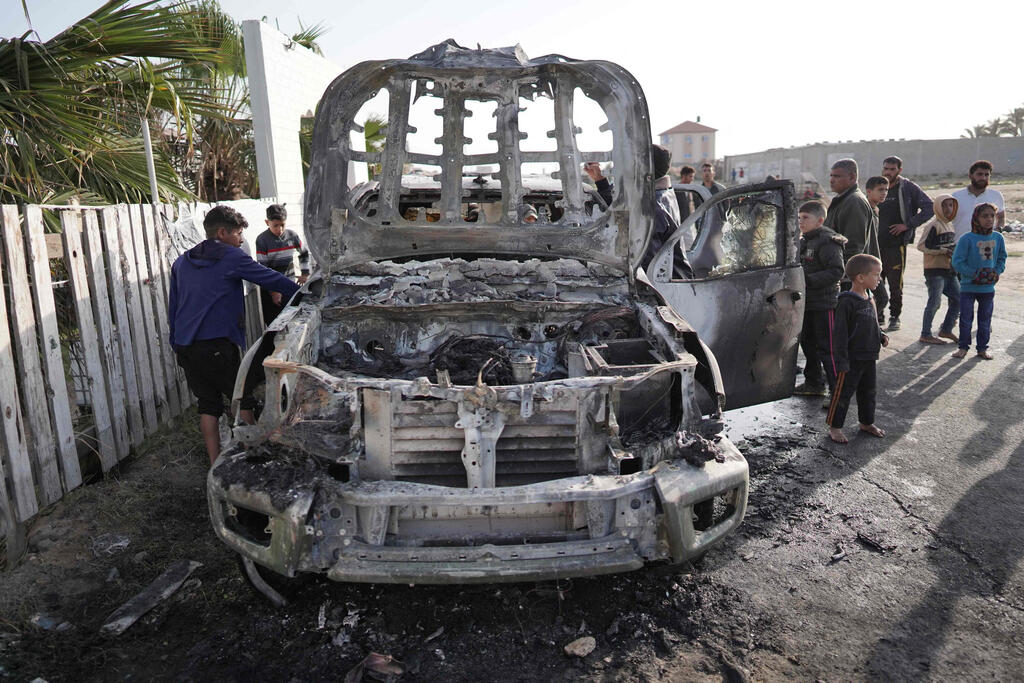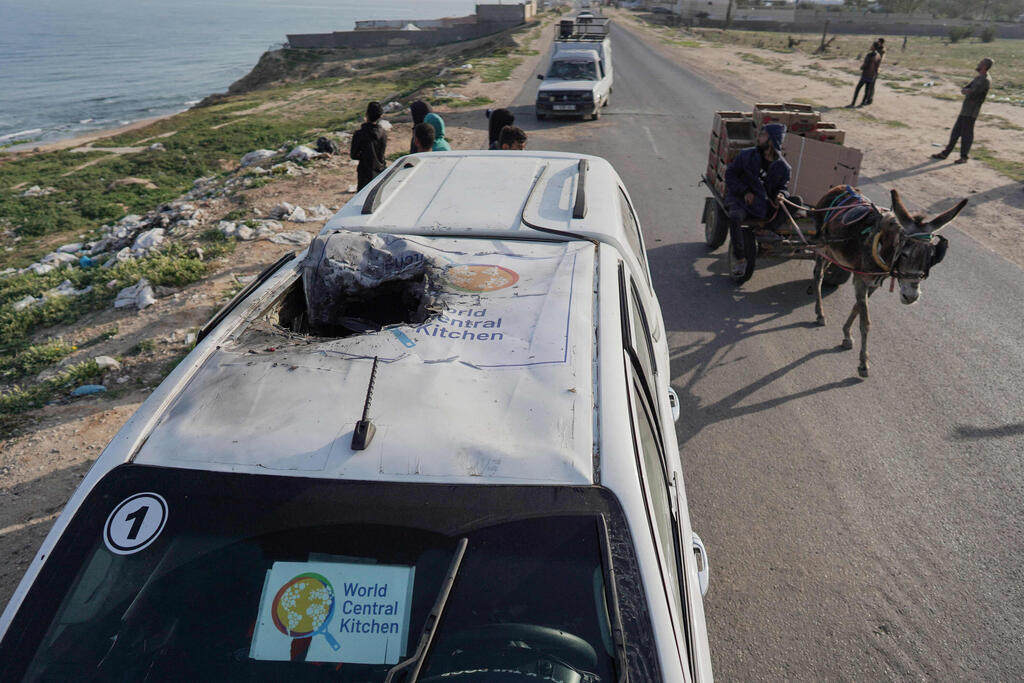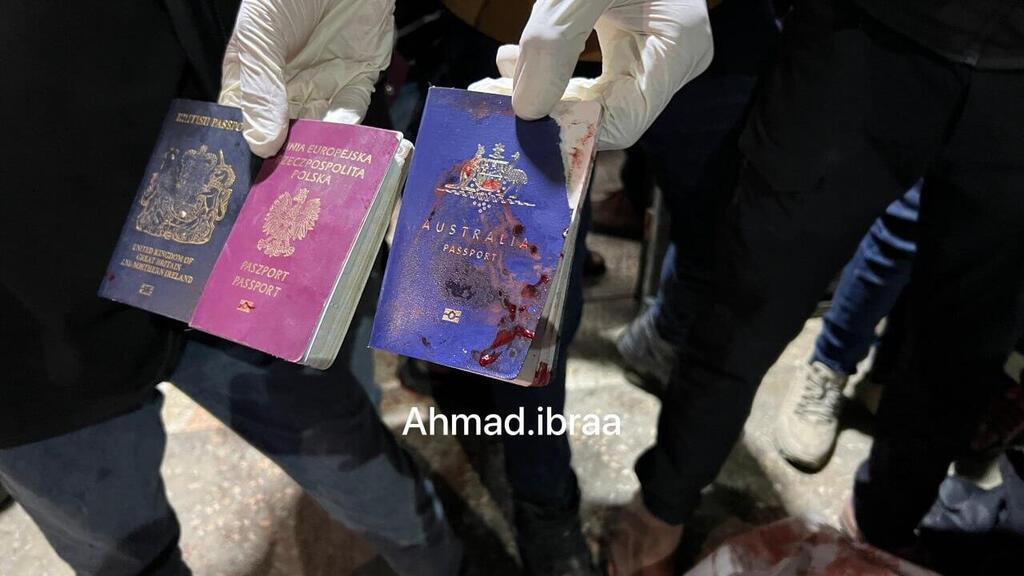The IDF released on Friday the findings of its investigation into the killing of seven humanitarian aid workers in the central Gaza Strip earlier this week, revealing a series of violations of the rules of engagement, resulting in the dismissal of two officers.
The IDF said that it “takes seriously the grave incident that claimed the lives of seven innocent humanitarian aid workers” with the international aid organization World Central Kitchen in Deir al-Balah on Tuesday.
“We express our deep sorrow for the loss and send our condolences to the families and the WCK organization,” a statement read.
“We consider the vital humanitarian activity of international aid organizations to be of utmost importance, and we will continue to work to coordinate and assist their activities, while ensuring their safety and safeguarding their lives.”
The investigation findings, presented Thursday night to the foreign press and representatives of the countries whose citizens were harmed in the attack, concluded the tragic incident could have been prevented, as forces were unaware of who was in the vehicles.
The military highlighted that since the war began, there were 6,000 successful and safe "coordination incidents" with humanitarian organizations, even as Palestinian crowds sometimes stormed the convoys and gunmen fired at them.
The incident began with a UAE-funded aid ship, inspected by the IDF in Cyprus, and headed toward the Gaza coast under naval supervision, carrying 300 tons of food.
Upon arrival in Gaza, the crew was to gradually unload its cargo over several days under IDF oversight. Initially, the cargo was successfully executed, with 162nd Division Commander Brig. Gen. Itzik Cohen overseeing the operation alongside naval forces at sea, while the Nahal Brigade monitored from land.
On the night of the incident, there were pre-coordinated efforts between WCK and the IDF. By 10 pm, eight trucks were loaded at the pier and began moving south along the coastal road to a food warehouse. About 20 minutes later, IDF forces identified four pickup trucks joining the convoy; according to Southern Command instructions, aid convoys include both trucks and pickups marked with WCK stickers and equipped with communication methods between IDF forces and their occupants.
These vehicles were supposed to pass through three checkpoints from the pier to the warehouses that night. These instructions were known to the 162nd Division but not to the Nahal Brigade's fire control center responsible for airstrikes, where officers believed the convoy should only consist of trucks.
Around 10:30 pm, the fire control center spotted the pickup trucks joining the convoy, and at 10:28 pm, they observed a gunman mounted on one of the trucks firing into the air. The representative who spotted this reported it to the division command, where he was instructed not to attack the convoy under any circumstances, even if a gunman was spotted, as it was a humanitarian convoy.
In this process, the fire control center also identified the four pickup trucks in the convoy and attempted to contact WCK representatives unsuccessfully. The government activities coordination representatives also tried to reach the organization's overseas coordinator, who couldn't establish contact during those critical minutes.
At 10:26 pm, the convoy stopped near one of the warehouses. From the air, the IDF identified approximately 15 individuals carrying bags near the pickup trucks and four gunmen as the trucks entered the warehouses.
At this stage, division instructions were still not to fire at all, but from the fire control center operators' perspective, the humanitarian mission ended once the trucks entered the warehouses.
At 10:29 pm, the pickup trucks left the warehouse, splitting into two directions - one vehicle headed north to the WCK concentration point, and three others went south. These vehicles were not considered innocent by the fire control center from the start due to the proximity of armed individuals. Thus, the forces classified the vehicles traveling south as belonging to Hamas.
The pickup trucks had identification stickers, but they were not visible from the drones at night due to the lack of thermal imaging. Consequently, the forces attacked the vehicles heading south three times from the air, with fatal results: seven WCK workers were killed, including six foreign nationals.
According to the investigation, the forces in the fire control center wrongly believed they were attacking Hamas operatives. However, the investigation found the strike was in violation of the rules of engagement since only the lead vehicle was suspected of carrying a Hamas operative, and the other two vehicles were targeted merely because some passengers moved between the vehicles. Such movement, according to the rules, is insufficient for targeting, yet three missiles were still fired.
The military described the attack as a severe failure and a violation of the rules of engagement. Early on, near the aid warehouse, the fire control center perceived the pickups as hostile rather than belonging to WCK; the Southern Command, where the attack was managed, should have sought firing approval from the brigade commander or division commander but did not; furthermore, there were no IDF soldiers in the vicinity, indicating there was no immediate danger, even if the pickups were indeed carrying gunmen.





